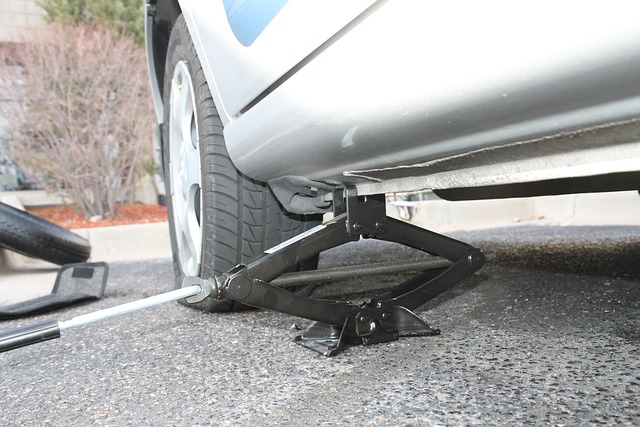To the average motorist, there is nothing worse than sitting on the side of the road with a flat tire. Although you might prefer to call a professional to come out and remedy the situation for you, this might not always be possible. For times like this, know how to fix a flat for yourself so you can get back on your way in the least amount of time. As long as you have the right tools and knowledge, changing a flat tire is a fairly simple task. Follow this step-by-step process to help you get the job done quickly and safely.
Pull Over in a Safe Spot
If you find yourself with a flat tire, the first thing you need to do is find a safe and preferably flat place to park. Try to avoid grass or dirt, as these surfaces are typically not very stable and the jack might sink into the ground, causing the vehicle to fall. Turn off the engine and apply the parking brake, or put the car in gear to prevent it from rolling. If you have them, use a pair of wheel chocks to block the wheel opposite the flat tire.
Grab the Tools and Spare Tire
Open your trunk and remove the spare tire, jack, and tire tools. Your owner’s manual will tell you where they are located. If you have never used the jack included with your car, review the operating instructions first. These instructions will also indicate where the different jack points are on the car.
Before You Jack Up the Car
Before you jack up the car, you need to remove the wheel cover (if your car has one) and use the lug wrench to loosen the lug nuts. You need to do this while the wheel is still on the ground, as it might turn once it is off the ground. More importantly, the vehicle is very unstable once you jack it up.
Raise the Vehicle
Once you have loosened all the lug nuts, follow the instructions in your owner’s manual to locate the jack and raise the vehicle up high enough that the wheel and tire clear the ground. Again using the lug wrench, completely remove all lug nuts and remove the flat tire and rim. Set these where you won’t trip over them.
Install the Spare Tire and Rim
Install the spare tire and rim in place of the one you just removed, and then install all the lug nuts hand-tight. You want the nuts to be tight enough to hold the spare in place while you lower the vehicle back to the ground.
Lower the Vehicle and Finish the Job
Lower the vehicle down to the ground, and remove the jack. Using the lug wrench, tighten the lug nuts securely. Your owner’s manual will show the proper tightening pattern. Then place the flat in the trunk along with all the tools, and you are ready to go. Remember most spares are for temporary use only and designed to operate at much slower speeds.
Image by Nicholas Jackson from Pixabay






